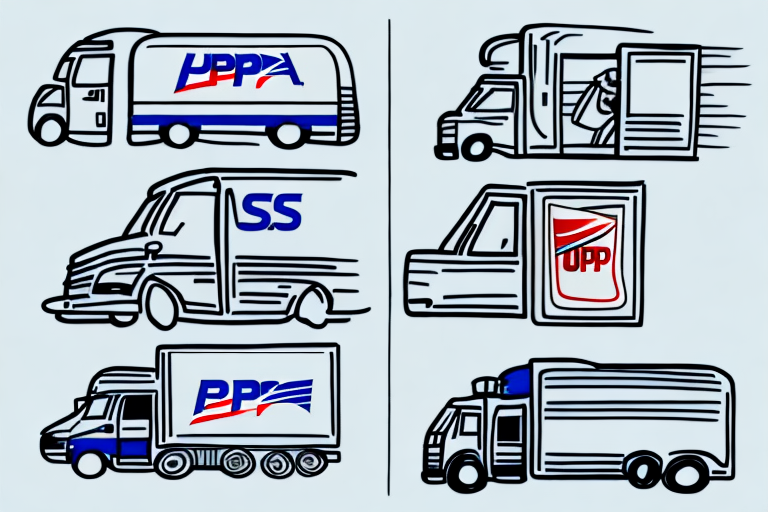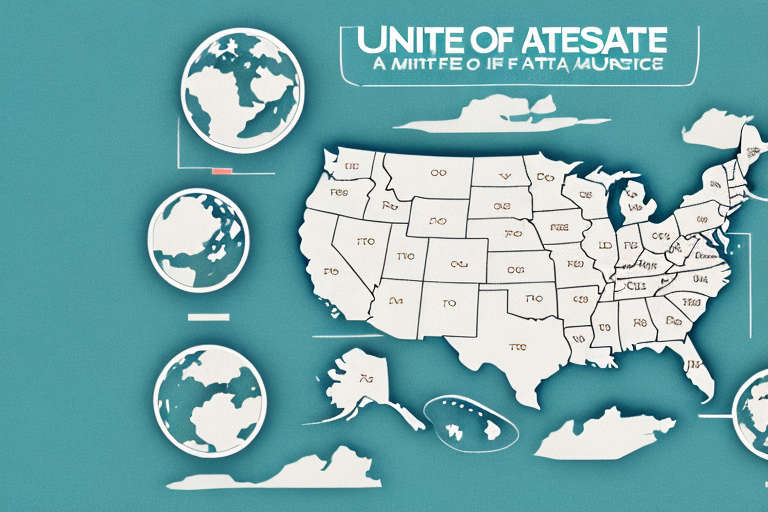Are UPS and USPS Shipping Rates Comparable?
When it comes to shipping, businesses must carefully consider their options. Two of the most popular carriers in the United States are UPS and USPS. Both offer nationwide coverage and various delivery options, but how do their shipping rates compare? In this article, we will take a deep dive into the costs, benefits, and drawbacks of using UPS and USPS for your shipping needs.
A Brief Overview of Shipping Rates for UPS and USPS
UPS and USPS offer different pricing structures, making direct comparison challenging. UPS rates are determined by package weight and destination zip code, while USPS rates are based on weight, distance, and package dimensions. Additionally, USPS offers flat-rate boxes that can be a cost-effective option for small, heavy items.
It's important to note that both UPS and USPS offer additional services that can affect the final shipping cost. For example, UPS offers insurance and signature confirmation for an additional fee, while USPS offers delivery confirmation and tracking for free. Considering these additional services is crucial when comparing shipping rates between the two carriers.
How to Calculate Shipping Costs with UPS and USPS
Calculating shipping costs can be a complex process, but both UPS and USPS offer online shipping calculators to help businesses estimate costs. With UPS, businesses need to input the package weight, destination zip code, and other shipping details. With USPS, businesses need to input the package weight, package dimensions, and destination zip code to receive a more accurate quote.
Both carriers offer various shipping options, such as ground, priority, and express, which can affect the cost and delivery time. Additionally, businesses should account for any additional fees, such as insurance or signature confirmation. It is recommended to compare rates between UPS and USPS to determine the most cost-effective and efficient shipping method for your business needs.
Understanding the Factors that Affect Shipping Rates with UPS and USPS
Several factors can influence shipping rates with both UPS and USPS, including:
- Package weight and size: Heavier and larger packages typically cost more to ship.
- Delivery distance: Longer distances can increase shipping costs.
- Shipping speed: Faster delivery options often come with higher prices.
- Package value: Higher-value items may require additional insurance, affecting the cost.
Additionally, both carriers offer different pricing tiers for businesses that ship frequently, which can result in negotiated discounts or lower rates on certain services.
The type of item being shipped can also impact the shipping rate. For example, hazardous materials or items that require special handling may incur additional fees. Always check with the carrier beforehand to be aware of any potential additional costs.
Pros and Cons of Using UPS for Shipping
Advantages:
- Variety of Shipping Options: Includes same-day delivery and international shipping.
- Advanced Tracking System: Allows customers to track packages in real-time and receive delivery notifications.
Disadvantages:
- Higher Rates: UPS rates can be more expensive than USPS, especially for small businesses or occasional shippers.
- Potential Delivery Delays: Delivery times may not be as reliable during peak shipping seasons.
- Package Issues: Some customers have reported issues with lost or damaged packages, though this is relatively uncommon.
Pros and Cons of Using USPS for Shipping
Advantages:
- Affordability: Generally more affordable for lightweight packages and services like Priority Mail.
- Variety of Mailing Options: Offers flat-rate boxes and first-class mail.
- Extensive Network: Large network of post offices and drop-off locations for convenience.
- Free Package Pickup: Available for certain shipping options, saving time and effort.
Disadvantages:
- Limited Tracking: Does not offer as many tracking features as UPS.
- Variable Delivery Times: Delivery times can vary depending on the package's final destination.
- Limited Liability Coverage: Offers less liability coverage for lost or damaged packages unless additional insurance is purchased.
Comparing the Delivery Speeds of UPS and USPS
Both UPS and USPS offer various shipping speeds, ranging from next-day delivery to standard shipping. Generally, UPS provides faster shipping speeds for a higher cost, while USPS can be a more affordable option for businesses that do not require expedited delivery.
Delivery times can vary based on the package's final destination, shipping method, and other external factors. For larger or heavier packages, UPS may be more suitable due to their resources and equipment. Conversely, USPS is often better for smaller packages or envelopes, especially with their flat-rate shipping options.
According to the USPS Office of Inspector General Report, USPS maintains a reliable delivery schedule for most domestic shipments, making it a dependable choice for standard shipping needs.
How to Choose the Best Shipping Carrier for Your Business Needs
The best shipping carrier for your business depends on various factors, including package size and weight, desired delivery speed, and budget. Consider the following when making your decision:
- Package Size and Weight: Larger and heavier packages may be more cost-effective with UPS, while smaller items might be better suited for USPS.
- Delivery Speed: If expedited delivery is essential, UPS may offer faster options.
- Budget: USPS often provides more affordable rates for certain services.
- Destination: Some carriers have better coverage or faster delivery times in specific regions or internationally.
Research and compare the international shipping options of each carrier if your business frequently ships overseas. According to the UPS Service Guide and the USPS Service Standards, understanding the specific services and coverage areas can help in making an informed decision.
Tips for Negotiating Shipping Rates with UPS and USPS
Businesses that ship frequently may be able to negotiate lower shipping rates with UPS and USPS by:
- Establishing a Shipping Contract: Long-term agreements can lead to better pricing.
- Working with a Carrier Representative: Representatives can provide insights into available discounts based on volume.
- Considering Shipping Volume and Frequency: Higher volumes can lead to significant discounts.
Additionally, the type of products being shipped can influence negotiations. Some carriers offer discounted rates for specific product types, such as books or medical supplies. For international shipments, it's essential to negotiate rates that accommodate the complexities and additional costs associated with overseas shipping.
Case Study: A Comparison of Actual Shipping Costs with UPS and USPS
To provide a real-life comparison, a business conducted a case study analyzing shipping costs between UPS and USPS. The study found that USPS rates were generally more affordable for lightweight packages, while UPS rates were more competitive for larger, heavier packages. However, the exact savings or costs depend on various factors such as:
- Distance: Longer distances can increase costs differently for each carrier.
- Package Size and Weight: Heavier and larger packages may benefit from UPS's pricing structure.
- Shipping Speed: Expedited services with UPS can lead to higher costs but faster delivery.
- Additional Services: Services like insurance or signature confirmation can add to the overall cost.
Businesses should evaluate these factors carefully to choose the most cost-effective shipping carrier.
Breaking Down the Components of UPS and USPS Shipping Rates
Understanding the components of shipping rates is essential for accurate comparison. Key components include:
- Base Rates: The fundamental cost based on weight, size, and distance.
- Fuel Surcharges: Additional fees that fluctuate with fuel prices.
- Delivery Area Surcharges: Extra costs for deliveries to remote or hard-to-reach areas.
- Additional Fees: Charges for specific services or package types, such as insurance or hazardous material handling.
Additionally, UPS offers guaranteed delivery dates for their services, while USPS provides estimated delivery dates. This can impact the overall cost, as businesses may need to pay a premium for guaranteed services with UPS to ensure timely delivery.
For more detailed information, refer to the UPS Shipping Guide and the USPS Priority Mail Details.
How to Save Money on Your Shipping Costs with UPS and USPS
Businesses can implement several strategies to save on shipping costs with UPS and USPS:
- Negotiate Better Rates: Engage with carriers to secure volume discounts.
- Use Flat-Rate Options: Take advantage of USPS flat-rate boxes or UPS's similar offerings for predictable costs.
- Consolidate Packages: Ship multiple items together to reduce the number of shipments.
- Utilize Online or Bulk Shipping Discounts: Many carriers offer discounts for online or bulk shipments.
- Optimize Packaging: Use the smallest possible packaging to minimize size-based costs.
- Adopt Eco-Friendly Packaging: Recycled or biodegradable materials can reduce costs and appeal to environmentally conscious customers.
Regularly reviewing shipping expenses and analyzing shipping data can help identify areas for cost reduction and efficiency improvement. Tools like ShipScience's Shipping Management can assist in tracking and optimizing shipping strategies.
The Impact of Package Size and Weight on Shipping Rates with UPS and USPS
Package size and weight are critical factors that significantly impact shipping rates with both UPS and USPS:
- Weight: Heavier packages generally incur higher shipping costs.
- Dimensions: Larger packages may be subject to dimensional weight pricing, especially with UPS.
Businesses should carefully consider the dimensions and weight of their packages to choose the most cost-effective shipping option. For instance, USPS's flat-rate boxes can be advantageous for heavier items, while UPS may offer better rates for bulkier shipments due to their extensive logistics network.
According to the National Institute of Standards and Technology, accurate measurement and weighing of packages ensure precise rate calculations and prevent unexpected shipping costs.
Tracking Your Shipments: A Comparison of UPS vs USPS Features
Both UPS and USPS provide package tracking features, enabling businesses to monitor the status and location of their shipments:
- UPS Tracking: Offers advanced tracking capabilities, including real-time tracking, delivery alerts, and the ability to see a map of the package's journey.
- USPS Tracking: Provides reliable tracking and delivery confirmation for most shipping services, including scan updates at major transit points.
While UPS's tracking system is more comprehensive, USPS tracking remains a dependable option for standard shipping needs. Businesses requiring detailed tracking information may prefer UPS, whereas those seeking straightforward tracking can rely on USPS.
For more information on tracking features, visit the UPS Tracking Services and USPS Tracking.
Customer Service Comparison: Evaluating the Support Offered by UPS vs USPS
Customer service is a vital aspect of choosing a shipping carrier. Both UPS and USPS offer various support options, including phone and online support:
- UPS Customer Service: Known for more personalized support and faster response times, with dedicated account managers for businesses.
- USPS Customer Service: More accessible for smaller businesses or individuals, with numerous retail locations and drop-off options nationwide.
While UPS may provide a higher level of personalized service for larger businesses, USPS's extensive network and accessibility make it a convenient choice for many small businesses and individual shippers.
For assistance, visit the UPS Support Center or the USPS Customer Service.
Conclusion
UPS and USPS each have distinct strengths and weaknesses concerning shipping rates and services. Businesses should carefully assess their shipping needs, including package size, weight, delivery speed, and budget, to determine which carrier best aligns with their requirements. Whether opting for UPS, USPS, or another shipping carrier, understanding the components and factors that influence shipping rates can lead to significant cost savings and ensure timely deliveries.
For further assistance in optimizing your shipping strategy, consider utilizing tools like ShipScience to manage and compare shipping options effectively.




















